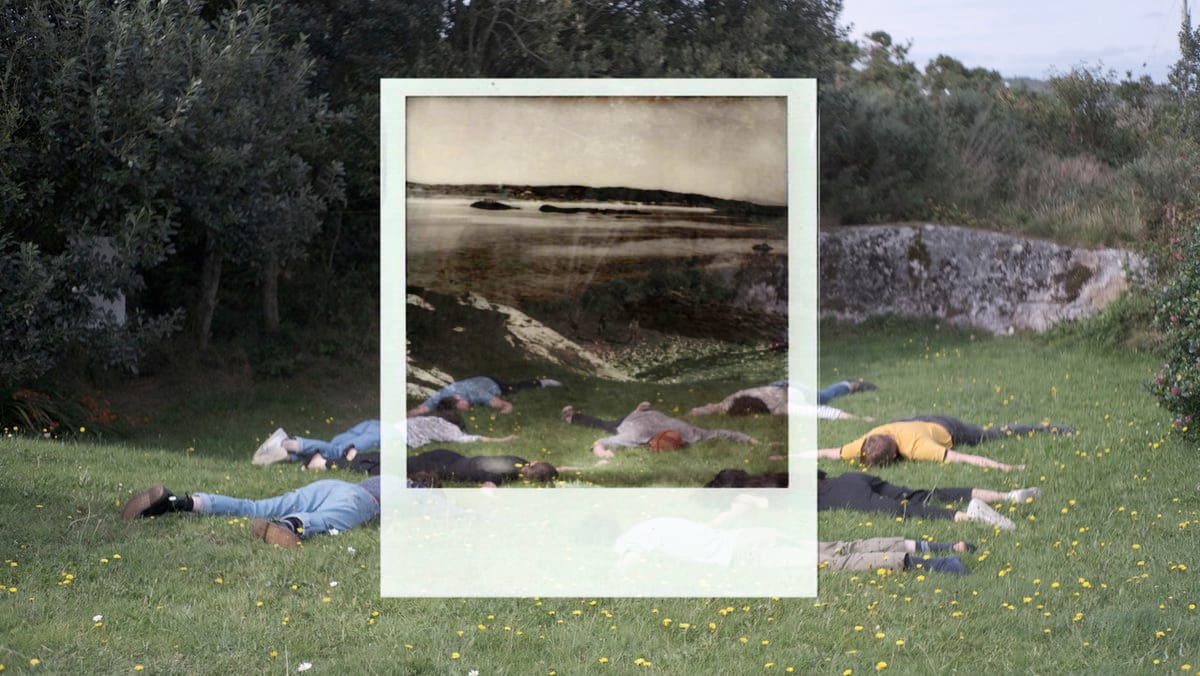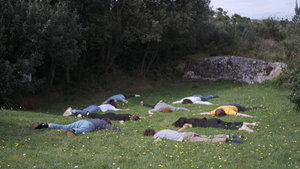trá pháidín, best band in the country, in perpetual motion
The best band in the country already has three albums out. Trá Pháidín's music strikes this absolutely gorgeous middle ground between post-rock, jazz and Irish traditional music. Under the surface, landscape, infrastructure and psyche combine.

The best band in the country already has three albums out. Trá Pháidín's music strikes this absolutely gorgeous middle ground between post-rock, jazz and Irish traditional music, with something daringly experimental at its core. A nine-piece band seemingly able to completely lock in to deep improvisations. Their (somewhat rare) live shows are every bit as explosive as the records, their records roar with the energy of their live shows. While standouts in their own right, they also nestle into a flourishing DIY scene, with deep connections across the country. All the band's communication comes in Irish - to the point where I bought CDs from them with my address set to Dublin and they landed in the postbox labelled Baile Átha Cliath. Much like a lot of people who've tried to write about them, I can't stop comparing them to Black Country, New Road, but we'll get to that later.

Their first two albums, Set a hAon and Set a dó, are records that I think deserve to be in the conversation for some of the best Irish albums ever recorded. As the names imply, these albums are each single tracks - both stretching for the better part of an hour as free-flowing, largely instrumental runs overflowing with buzz. It's not clear what's been worked out ahead of time and what's coming from the band's improvisations - Set a dó has some beautiful multi-part vocals right at the start of it - but what is clear is that the single most important thing here is the restless sense of motion at its core; crescendos into crescendos, frantic drum grooves.
The blend of instruments from across trad, jazz and post-rock - woodwinds, fuzzed-out guitars, two drummers on the later recordings, occasional vocals like spectral reel-to-reel tapes - all wash over as a river oscillating from chaotic cascade to still swimming waters, and onwards to the coast. The river metaphor can only take us so far though; and it's that third album An 424 that finally unlocks the reason I've been using their music to soundtrack every train journey I've been taking for the last few months.

Their third record, An 424, is far more of an album - it has twelve tracks, but the restless energy persists, and here the sense of perpetual motion is made clearer in how the band talks about the album. Taking its name from the bus route that from Galway to Conamara alongside the R336 Bóthar Cois Farraige (seaside road), the album is a meditation on the idea of how the infrastructure of rural Ireland shapes us, and how exploring that infrastructure allows us to explore the people within it.
Diabhaltaí an téarma é 'sícitíreolaíocht' (psychogeography)..........sin an tionchar a bhíonns ag tíreolaíocht agus tírdhreacht ceantair áirid ar shícé, aigne agus nádúr mhuintir na háite sin…………..s’dóigh.
As I'll badly translate:
The term "psychogeography" is a devilish one - the notion that the geography and landscape of a particular area affects the psyche, the mind and the nature of the people in it. I suppose...
‘Bhfuil tionchar ag an mbus ar nádúr na ndaoine?
Nó an bhfuil tionchar ag na daoine ar nádúr an bhus?

I don't drive. I failed my test three times and then I let life get too in the way to finish that one up. I will get there eventually. I take trains and buses across the country and I get deeply sad about the torn up railways that could have taken me all the way home to the town where I grew up. The country continues to develop greenways - cycling and walking routes formed out of the ghosts of these old train networks, which on one hand are lovely but on the other ache with lost potential. I don't drive but I did get my manual handling cert in the middle of the end of the pandemic - filming myself picking up boxes in an attic room in West Cork so I could send the files over WhatsApp. I'll explain why that's weirdly relevant here.
An 424 was recorded on August 27th 2022 in an Cheathrú Rua, a seaside village in the Conamara Gaeltacht.
The very next day, I did my run of trying to get from Dunmanway in West Cork, up to Inis Bó Finne, off the same Conamara coast. The 236 from Dunmanway to Cork, the CityLink from Cork to Galway, another CityLink from Galway to Cleggan parallel to that Bóthar Cois Farraige, a stop for some oysters and a pint, the Inisbofin Ferry from Cleggan to the island. On the island for a week, I helped out on the Inishlyon Project, working an archaeological dig in the morning, wading home in the low tide in the early afternoon. Now, I'm not fully versed in this world, so you'll have to take this next bit with a grain of salt. The Inishlyon Project was at the time focused on mapping out some houses that seem to be from a somewhat recent past - late 19th century dwellings, where you'd wonder if the occupants may have ended up scattered between there and America by the time they were done.
The settlement, built on sand which was subject to erosion, appears to be the remains of a 19th-century sunken kelp village with associated kelp kilns, walls and middens. [...] A hearth was present near the entrance which contained a fragment of spongeware pottery dating from the 1870s. The floor is made of compacted sand. Two iron sickle-shaped implements found in the house may have been used to cut seaweed.
https://excavations.ie/report/2017/Galway/0026460/
We talked about what older settlements might have been there before - lost to time and the sea. Spent the evenings taking the place in, swimming in the cold water, taking the sunsets in. By the end of the week, covered in bites from ants and midges, it was time to go home. First to the mainland, summer's end sunset on forgotten sands. A 4am lift from Damhros to Galway. The 6am train from Galway down to Limerick. A trip to the hateful Limerick Junction. Back to Cork, and back onto the 236.
A blogger going by A Lifetime of Islands catalogued Inishlyon as "Island 423". Coincidences always seem to be one step away.

What it feels like to listen to Trá Pháidín. A phenomenal journey through the full cross-section of our island, that has to start out getting a manual handling cert over WhatsApp.
ndáiríre tho, meastú cén fáth nach mbíonn signal ag an bhfón thart ar shiopa an phobail?
Psychogeography, sonic archaeology, the ancient, the infrastructural, looking out the window on the 424 at the pace of the TGV, miles per week then miles per hour, inscrutable timetables on PDF documents, "an cathrach", do you get it yet?
I've compared Trá Pháidín to early Black Country, New Road a bunch outside of this site, and I'm not the only person saying it. The vibes align. Similar instrumentation, similar ways of recording, similar improvisational feel and similar influences being taken from traditional music (even if BCNR have dialled the klezmer way back as of late). I guess the name helps; even if Black Country, New Road's relationship to the actual Black Country New Road, the spine of the English midlands, is tangential - a Wikipedia "Random Article" hit with a comma in it. They could just as easily be called "Land Rover, Defender" or "Htupayon, Pagoda".
The same way as BCNR is the product of a chaotic, productive local scene which led to a debut album powered by flux, it's easy to see Trá Pháidín as another nexus in a wider story of Irish experimental music. You can add up the signifiers
- Lined up to play the closer of the iconic Féile na Gréine festival this month next to the no-wave punks Crying Loser (who they share a bunch of members with) and the likely indescribable Boyfrens x Messyng FC set (the Fourth Best word on Messyng FC will follow some day)
- Members also moved into the interesting new prospect Ana Palindrome, who's SORRY A MILLION is one of the Irish tracks of the year so far
- tied to the same Sunshine Cult that brought us records from Mantua and Mark Waldron-Hyden
- featured on the Litany of Failures compilation series as well as a particuarly important mixtape Lankum put together of new, groundbreaking Irish folk.
- ‘Spud’ Murphy mixed the new one, naturally, if you're looking for another link to the heavyweights like ØXN and John Francis Flynn.
This is the same story I always tell; everything in Irish music is a starting point to everything else. Sonic archaeology; a scene to be studied. Trá Pháidín's music is rarely found on streaming - An 424 took six months to hit Spotify, the Sets never made it, and there's a lovely little handful of blúiríní beaga and a beautiful untitled drone piece knocking around on their Bandcamp page.

How does the band describe themselves? In a gig listing for St. Paddy's Day in Dublin, they say:
Deirtear go bhfuil gang act agus nach bhfuil gang acu….
Deirtear gur céilí band iAd nach g’iarraidh a bheith ina chéilí band…..
Deirtear grub iad saibhreas agus náire na ngael....
Deirtear go bhfuil sé cineál ar nós ceou traidisíunta, jazz, kosmiche agus tobchumadh bailigh craiceáilte….
Deirtear go Trá Pháidín nó Báidín Fheilimí an t-ainm atá orthu….
Then the same in English:
Some say there’s loads and none of them…
Some say they’re an accidental céilí band…
Some say they are the pride and shame of the gaelic league….
Some say it’s kinda like trad, jazz, krautrock and insanity with some improv…..
Some say they’re either called Trá Pháidín or Báidín Fheilimí…..
I won't add to that. But some further reading:

If you're hungry for more of the West showing up in exciting contemporary music, I'll pass this one on; a friend recommended a phenomenal pair of EPs by Manchester jazz punks Maruja. They're another easy recommendation for fans of the Speedy Wunderground alumni like BCNR, Squid or Black Midi. Their sax player's granda took some incredible photographs in Sligo dating as far back as the 1920s. The cover art of Knocknarea depicts the Rural Electrification Scheme. The music absolutely rips, of course.
And speaking of linemen of the county, I couldn't possibly end an article about the psychogeographical in Irish music without mentioning the phenomenal experimental label The Department of Energy, who have fused the history and geography of hydroelectric power in Ireland with Celtic mythology as a jumping off point for rich collaborative mixtapes.

While I'm back in West Cork for the weekend, I plan to revisit the Lee Valley Delta Drones:
That's all from me for now. It's been quiet over here for July, but we are working on getting the pieces in place for our interview series soon; kicking off with our first live event in September. In the meantime, I'll be tipping away on a few essay pieces - including one more on Irish hip-hop that's still in the works, and hopefully a bit of new music coverage.
Le gach dea-ghuí,
fourth best






